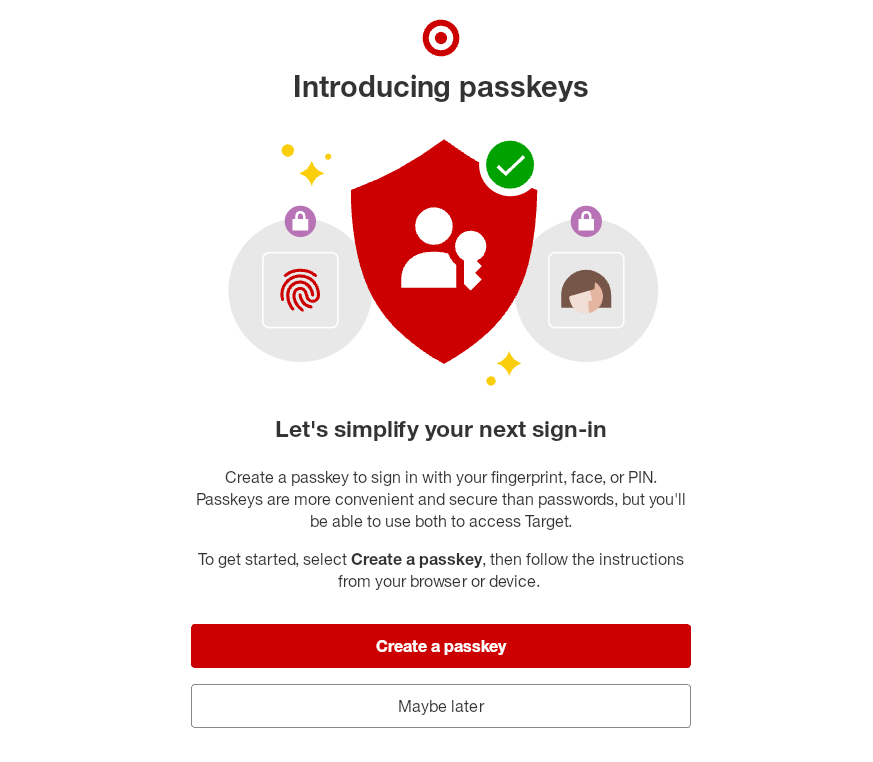We all think we’re smart enough to not be tricked by a phishing attempt, right? Unfortunately, I know for certain that I’m not, because I entered my GitHub password into a lookalike phishing website a year or two ago. Oops! Fortunately, I noticed right away, so I simply changed my unique, never-reused password and moved on. But if the attacker were smarter, I might have never noticed. (This particular attack website was relatively unsophisticated and proxied only an unauthenticated view of GitHub, a big clue that something was wrong. Update: I want to be clear that it would have been very easy for the attacker to simply redirect me to the real github.com after stealing my credentials, in which case I would not have noticed the attack and would not have known to change my password.)
You might think multifactor authentication is the best defense against phishing. Nope. Although multifactor authentication is a major security improvement over passwords alone, and the particular attack that tricked me did not attempt to subvert multifactor authentication, it’s actually unfortunately pretty easy for phishers to defeat most multifactor authentication if they wish to do so:
- Multifactor authentication based on SMS is extremely insecure (because SS7 is insecure)
- Multifactor authentication based on phone calls is also insecure (because SIM swapping isn’t going away; determined attackers will steal your phone number if it’s an obstacle to them)
- Multifactor authentication based on authenticator apps (using TOTP or HOTP) is much better in general, but still fails against phishing. When you paste your one-time access code into a phishing website, the phishing website can simply “proxy” the access code you kindly provided to them by submitting it to the real website. This only allows authenticating once, but once is usually enough.
Fortunately, there is a solution: passkeys. Based on FIDO2 and WebAuthn, passkeys resist phishing because the authentication process depends on the domain of the service that you’re actually connecting to. If you think you’re visiting https://example.com, but you’re actually visiting a copycat website with a Cyrillic а instead of Latin a, then no worries: the authentication will fail, and the frustrated attacker will have achieved nothing.
The most popular form of passkey is local biometric authentication running on your phone, but any hardware security key (e.g. YubiKey) is also a good bet.
target.com Is More Secure than Your Bank!
I am not joking when I say that target.com is more secure than your bank (which is probably still relying on SMS or phone calls, and maybe even allows you to authenticate using easily-guessable security questions):

Good job for supporting passkeys, Target.
It’s probably perfectly fine for Target to support passkeys alongside passwords indefinitely. Higher-security websites that want to resist phishing (e.g. your employer’s SSO service) should consider eventually allowing only passkeys.
No Passkeys in WebKitGTK
Unfortunately for GNOME users, WebKitGTK does not yet support WebAuthn, so passkeys will not work in GNOME Web (Epiphany). That’s my browser of choice, so I’ve never touched a passkey before and don’t actually know how well they work in practice. Maybe do as I say and not as I do? If you require high security, you will unfortunately need to use Firefox or Chrome instead, at least for the time being.
Why Was Michael Visiting a Fake github.com?
The fake github.com appeared higher than the real github.com in the DuckDuckGo search results for whatever I was looking for at the time. :(